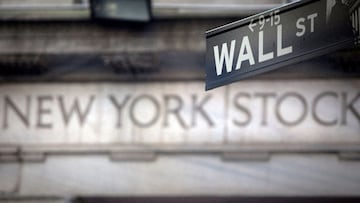Is the US economy heading into a bull market? What does it mean?
The stock market is inching closer to “bull” territory. What does this mean, and how does it differ from a bear market?


The S&P500 reached its highest level ever recorded in December 2021. But following the Russian invasion of Ukraine, additional waves of the covid-19 infections, and inflation, the value of stocks began to fall —bottoming out in October 2022. Today, with inflationary pressure easing out of the economy and job growth exceeding expectations, investor behavior suggests a more optimistic economic outlook.
The S&P500 has seen a rise of almost five percent compared to its position a month ago and a growth of nearly ten percent from where it was in early January. But for investors, the sign that we are entering a bull market is evidenced by a twenty percent increase in the S&P500 since October. During the latter part of 2022, the decline in the market was largely attributed to the tech sector. However, the recent advancements in AI technology have revitalized many of these stocks, leading to an overall surge in the stock market.
It's official. A new bull market is confirmed.
— Bespoke (@bespokeinvest) June 8, 2023
The S&P 500 is now up 20% from its 10/12/22 closing low. The prior bear market saw the index fall 25.4% over 282 days.
Read more at https://t.co/H4p1RcpfIn. pic.twitter.com/tnRz1wdonp
This might interest you: What is a bear market and when did the stock market experience the last one?
S&P500 inches closer to its record high
Whether or not the market will be able to make up the eight percent difference in the S&P500′s current level and the high seen in late 2021 remains to be seen. If the market were to maintain the pace it has set over the last week, increasing 52.93 points or 1.25 percent, it would take around seven weeks to surpass the index’s previous record.
Will the Federal Reserve increase rates in June?
Related stories
However, if the Federal Reserve chooses to increase interest rates further this month, this pace may be slowed as firms, particularly those in the financial sector, adjust their outlook. The Federal Open Market Committee (FOMC) will meet in mid-June to discuss further changes to monetary policy, at which point, the central bank will make public its intention to alter interest rates.
Market Watch’s Greg Robb reported that the bullish behavior of investors is, in part, premised on the hope that the Fed will pause further rate increases this month. Nevertheless, many of the financial experts Robb spoke with said that they would not be surprised if the central bank pushed rates up another 0.25 percent. The Bureau of Labor Statistics will release the Consumer Price Index report for May next week, which will be a critical data point for the FOMC as they evaluate any possible changes to interest rates. Should rates be hiked once again, the stocks are likely to take a short-term hit which would stifle the possibility of a strong bull market emerging.

